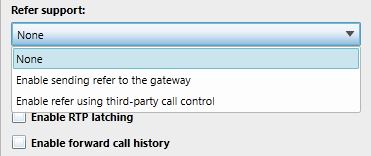We are in the middle of a migration from Lync 2010 to Lync 2013. The migration has been very smooth and we moved several users over to the Lync 2013 environment for pilot. Shortly after migrating the users, we identified issues with our Dial-In Conferencing. Anyone on Lync 2013 that created a conference could not dial into the conference. Users would call in, be prompted to input the meeting number and then would receive a busy signal. If the user moved back to the Lync 2010 pool, Dial-In Conferencing would work again.
During this process, we didn’t move our SIP trunk from the Lync 2010 Mediation Server at all, so I wasn’t sure why there should be any difference in this case. After running a trace on our Lync 2010 Mediation Server we found the following Messages during a Dial-In Conferencing test hosted by a Lync 2013 user:

The REFER method error indicated that it wanted to transfer the call from the Lync 2010 Mediation server to itself, which didn’t seem to implicate the new Lync 2013 environment. After checking in with tech support at our SIP trunk provider they reminded us that the REFER method must be turned off for their SIP trunks. In looking at the Lync 2010 Control Panel, the REFER method support is just a check box for “Enable refer support”:

But in Lync 2013 Control Panel this has been moved to a drop down list and this feature hasn’t been duplicated to match the Lync 2010 environment:

So the default setting in Lync 2013 turns REFER method support back on and sets it to “Enable sending refer to the gateway”.
Just set the Lync 2013 REFER method support to “None” and save the settings to match the Lync 2010 environment. Once the change was made, the Dial-In Conferencing started working again for our Lync 2013 users and the migration could continue.